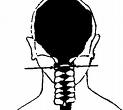A recent study has just shown how a specific chiropractic treatment can help reduce blood pressure. WebMD did a great article on it.
You can also view the Good Morning America, GMA, clip on youtube.com.
The specific type of chiropractic treatment that was used in this study is called NUCCA. NUCCA stands for National Upper Cervical Chiropractic Association. This treatment specifically addresses the top vertebra in the neck, which is called C1 or the first cervical vertebra, and is positioned at the base of the skull. X-rays are used to determine the exact position of C1 and where the best position of C1 should be to balance the head over the body. There are many nerves, especially the end of the brain stem and start of the spinal cord, as well as many blood vessels passing through C1. The idea is when the C1 area is balanced, the blood flow and nerve pathways through and around C1 are optimized and working properly. Chiropractors call this being at ease. This ease or relaxed state allows the nerve signals or messages and blood flow to get to the brain without interference. The body needs a certain amount of blood pressure in the blood vessels of the body and especially in the blood vessels of the brain in order to get nutrients and oxygen to cells. The brain has sensors throughout the body to make sure the brain and body get what they need through the blood flow of the body. If the body is not getting enough oxygen to the brain, then there are processes in the body that can increase the blood pressure so the brain can get what it needs. The problem being a blood vessel only has so much strength and if your blood pressure gets too high, worst case scenario, a blood vessel can burst. If a burst vessel happens in the brain it is called a stroke. If the C1 is in the wrong position and causing pressure in the base of the skull, the brain must raise the blood pressure to get what it needs. When the C1 is in the right position, the blood pressure doesn’t need to be as high to get nutrients and oxygen to the brain.
So, don’t throw out your blood pressure medications just yet. People who are on blood pressure medications need to be taken off of them slowly and a person’s blood pressure must be monitored consistently to make sure the blood pressure stays in the normal range. Changes in the body take time and may need a period of transition to stabilize.
This is a great study to show how chiropractic can influence many aspects of health. I saw a great chiropractic shirt the other day saying,”Health – now available without a prescription.” Chiropractic and Blood Pressure, great job NUCCA.









